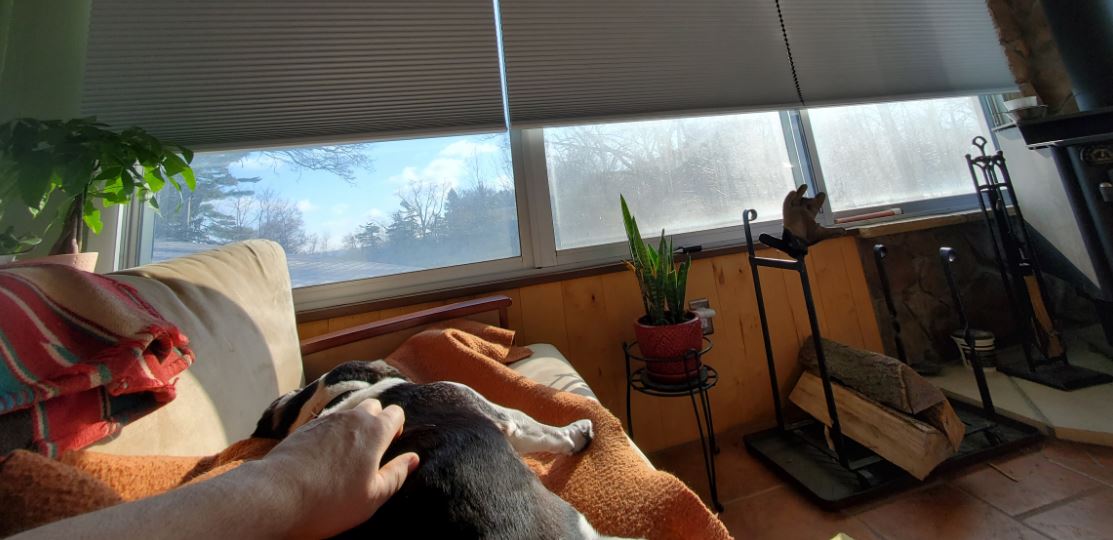
Morning dog and I were very comfortable, when the sun had risen high enough to interfere with my bliss. Morning dog had already been out to pee and come in to investigate the snack pit, so neither of us wanted to get off the couch.
I could endure the morning sun shining in my eyes, when it occurred to me that with my phone, I could command my robot window shades.
After a year of retirement, in 2022, it was time to address the summer sun in the solarium. All three walls are full of windows. There are trees all over the place, but that only shades the south-facing windows. With the power-line easement, there is little room for trees to shade the west-facing windows. The east-facing windows look over the driveway, a little bit of yard, and the clearing where the church’s poor house used to stand.
I considered retractable awnings, but since so much of each wall is windows, there isn’t much space for mounting hardware. It seemed like a big project, and I might not like the finished product.
Reflective window film was an option, but the sunshine is welcome in the winter. I investigated sun-blocking window screens. The screen mesh uses thicker fibers, like pet-proof screen. There is room between the window and the storm window to slide in a screen, so I made one. The screen blocked 80% of the sun. It made the room dark, and darkened the view. I didn’t like it.
I went back to an idea that I had twelve years earlier when I renovated the solarium. Above each window, a switched outlet was installed. The thought was I might want to put a soffit above each window to conceal a traverse rod for curtains. It would be cool to conceal lights in the soffit, pointing up to reflect light off of the ceiling.
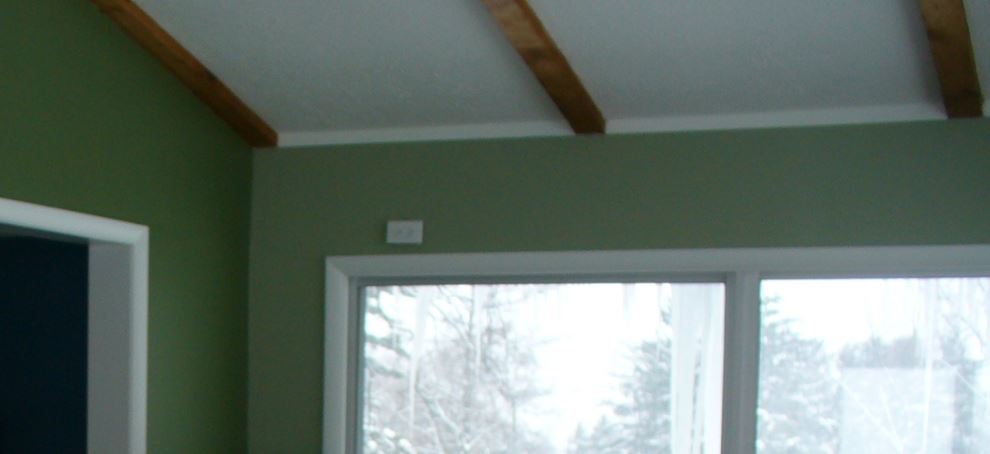
Blocking light outside would be better for keeping the solarium cool, but inside would have to do. There isn’t much wall space next to the windows, and the wood burning stove was an issue, so shades were chosen over curtains.
A laser level was really handy for getting the brackets level to hold a shelf. Lights would rest on that, and the shelf would be needed for the shades.
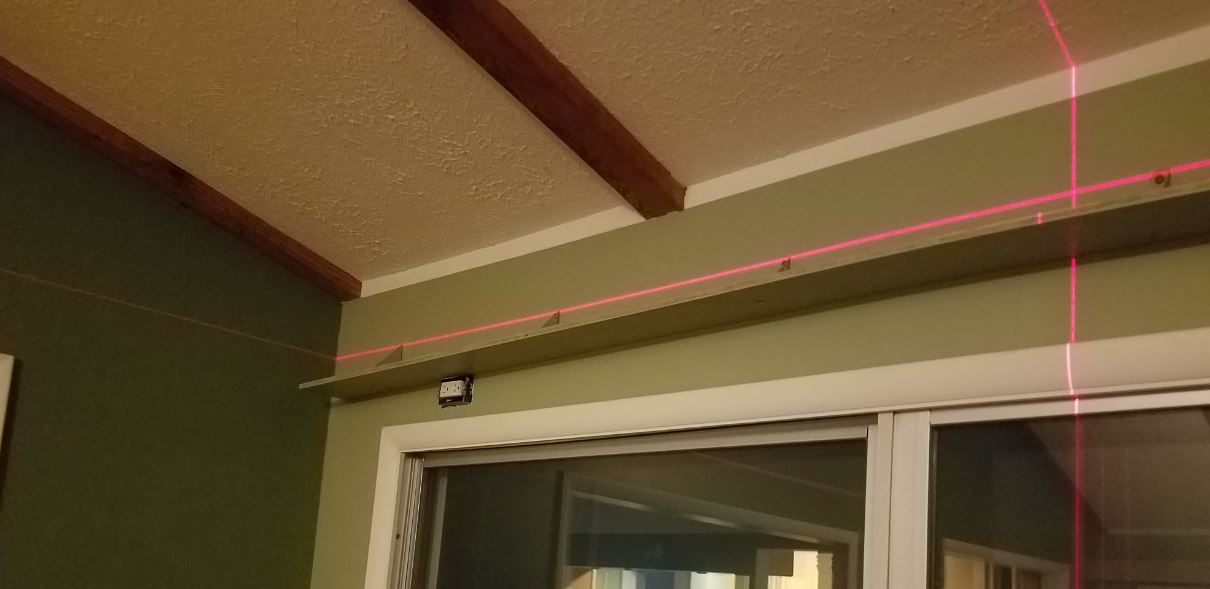
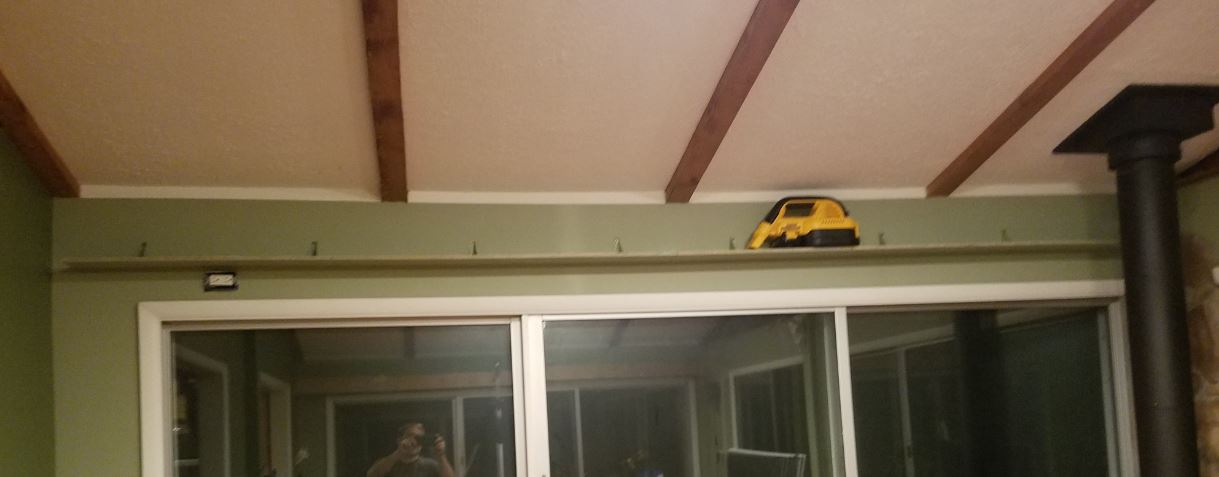
The shelf was too close to the outlet, but I’d figure that out later. When this room was renovated, IKEA maple flooring was used as the surface for the lower walls. Enough panels were ordered to be able to face the soffits with the same material. There was a little bit of trial-and-error, so the drywall was patched as necessary.
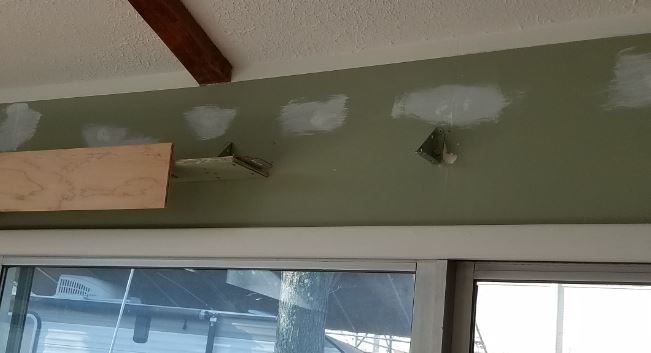
A 12 foot shade is a custom job, so instead, each window would get three 4 foot shades. Other windows in the house have shades, but they are never adjusted. The solarium shades were intended to be used, so I looked into motorized shades. Turns out, they are about three times the price of regular shades, and six of them were needed.
On the Home Improvement Reddit, someone suggested IKEA motorized shades. They don’t carry a wide variety of sizes, but they did carry 48 inch shades. They are called Tredansen, and are battery-powered. I’m not nuts about that, but they last about 6 months between charges. Each shade was $180 from IKEA. That’s about half the price of other motorized shades.
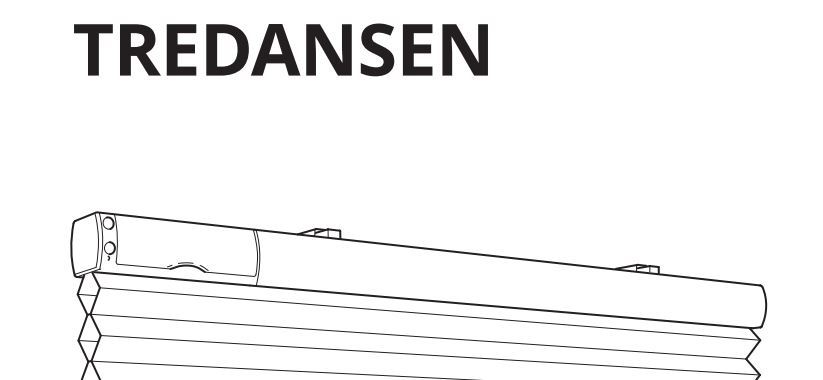
The shades install easily in a mounting bracket that allows them to be taken down in a minute if necessary. Also, the shades tuck up into the soffit when closed.
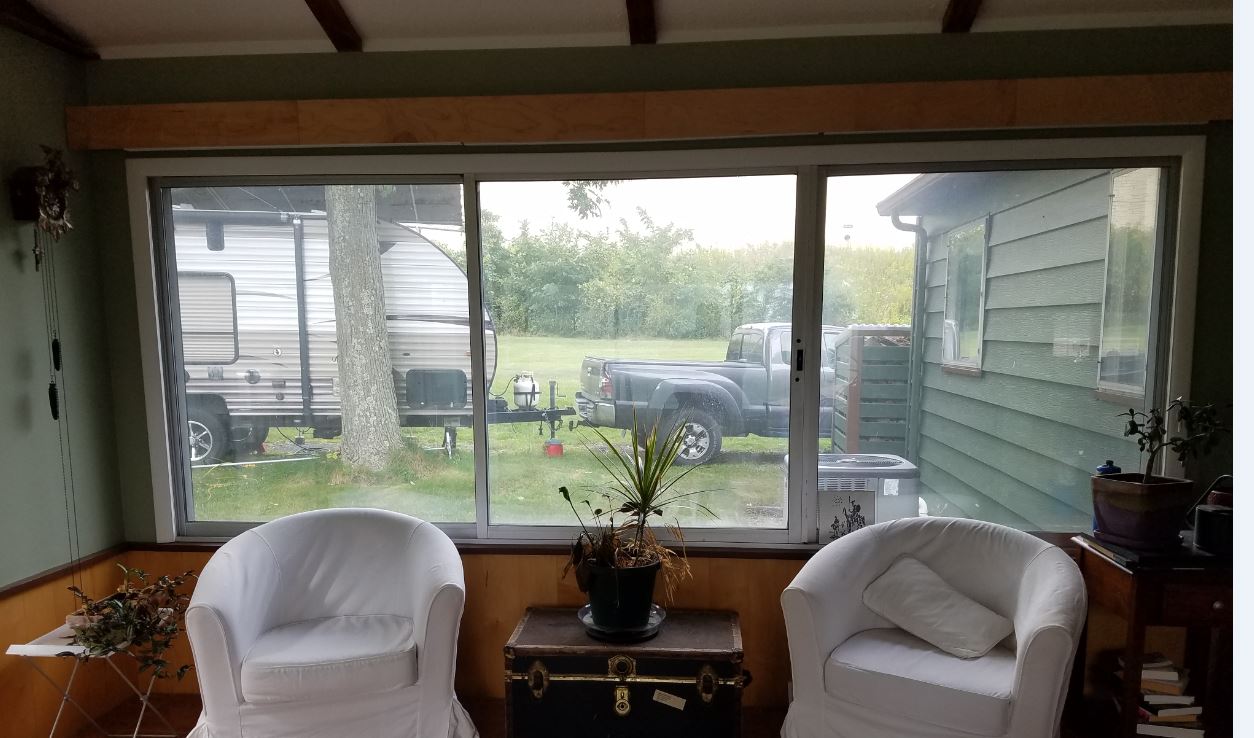

By adding the IKEA Dirigera hub, the shades become robotic. IKEA instructions are not exhaustive, but with Youtube help, the shades automatically go down a half-hour after sunset and come up a half-hour before sunrise. They can also be controlled with the IKEA Home app. The Dirigera was $70.
That is the limit of the automation available without stepping up to a more sophisticated system. I have the hardware, but not the gumption, to implement Home Assistant software to get fancier.
The LED strip lights were trivially easy to install. They rest on the soffit shelf, with the little remote control sensor sticking out between the maple panel and the wall. They are better than I had anticipated.
I leave the LED lights on all the time. They use very little electricity, and are barely visible during the day. It’s fun to set the LED lights to continually change color. The room feels like there is a party in there. Usually, the lights are left on red because dogs don’t see those wavelengths very well. It gives me a small advantage over Sparky.
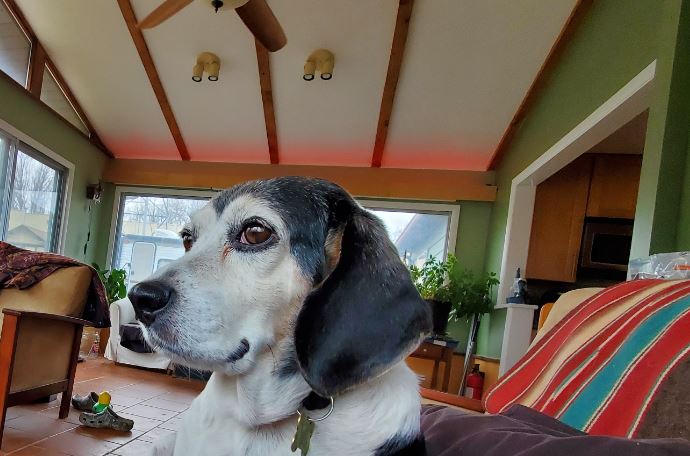
With the project complete, I wouldn’t have done anything differently. The soffits match the decor of the room, and the shades and lights can be changed if something better comes along in the future.
Home automation is advancing. If it gets easier to integrate IKEA components with other protocols, I may try stepping up a level in sophistication.
It’s kind of like this website. Everything works pretty well. It would be a steep learning curve to get it working great.